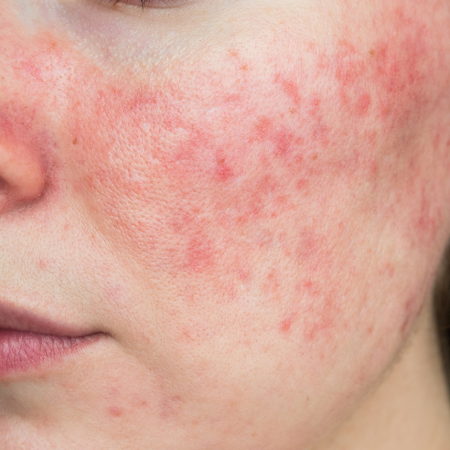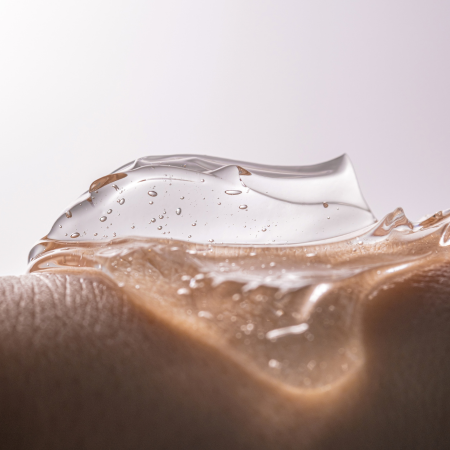As we age, the effects of gravity, loss of collagen, and natural facial expressions can lead to sagging skin and a tired appearance. Thanks to advancements in aesthetic medicine, there are now countless non-surgical options out there to combat these signs of aging. Among them is the PDO thread lift, a minimally invasive procedure that lifts and tightens the skin to provide natural-looking results. As with all medical procedures, it begs the question: are PDO thread lifts safe? Compared to traditional surgical options, it is much safer due to the minimally invasive nature of the thread lift. However, there are potential side effects and complications you should keep in mind, and we’ll explore them together in this blog post.
PDO (Polydioxanone) lifts are a procedure that involves inserting biocompatible threads made of a dissolvable material into the skin. These threads create a supportive structure that lifts sagging skin and stimulates collagen production, resulting in improved skin elasticity and texture. The procedure is performed by a trained medical professional and can be used to address various areas of the face, including the cheeks, jawline, neck, and eyebrows.
Understanding the risks associated with thread lifts
While thread lifting is generally considered safe and has a low risk profile, like any medical procedure, there are potential risks and complications that should be considered:
Swelling and Bruising: Swelling and bruising are common side effects of a PDO thread lift. While these are usually temporary and subside within a few days to a week, some people may experience more prolonged or severe swelling and bruising.
Discomfort or Pain:
During the procedure, patients may experience some discomfort or pain as the threads are inserted into the skin. However, local anesthesia or numbing cream is often used to minimize this discomfort. After the thread lift, there may be mild soreness or tenderness around the treated area, which usually resolves within a few days.
Dimpling:
Dimpling caused by PDO threads is the formation of small depressions or irregularities on the surface of the skin after a thread lift. These dimples can occur when the threads are placed too close to the skin's surface or when the threads are not properly anchored or tensioned.
Thread Migration: In rare cases, PDO threads may move or migrate from their original placement, which can lead to asymmetry or an undesired outcome. It's crucial to have the procedure performed by a skilled and experienced medical professional who understands proper thread placement techniques to minimize this risk.
Visible or Palpable Threads:
In some cases, PDO threads may become visible or palpable under the skin, resulting in a visible or irregular texture. This is more likely to occur if the threads are placed too close to the surface or if the skin is thin. Careful thread placement and adherence to proper technique can help minimize this risk.
Thread Breakage:
Although rare, threads can potentially break during or after the procedure. If this occurs, additional steps may be required to remove or address the broken thread.
Infection:
There is a risk of infection at the insertion sites where the threads are placed. However, this risk can be minimized by ensuring proper sterilization techniques and following post-procedure care instructions, such as keeping the treated area clean.
Allergic Reaction:
While PDO threads are generally considered safe and well-tolerated, there is a small possibility of an allergic reaction to the materials used. It's important to inform your medical professional of any known allergies or sensitivities before undergoing the procedure.
How often would PDO thread lift side effects occur?
Comparing the risks of PDO thread lifting with surgical cosmetic procedures
Anesthesia-related risks:
Surgical procedures often require general anesthesia or deep sedation, which carries inherent risks such as allergic reactions, breathing difficulties, and adverse reactions to medications. In contrast, thread lifting typically uses local anesthesia or numbing cream, significantly reducing the risks associated with anesthesia.
Invasiveness and Recovery Time:
Surgical cosmetic procedures involve incisions, tissue manipulation, and longer recovery periods. This increases the risk of complications such as bleeding, infection, scarring, and prolonged healing. Thread lifts are minimally invasive and have shorter recovery times, resulting in fewer risks associated with surgical wound healing.
Infection:
Both surgical procedures and thread lifts carry a risk of infection. However, surgical procedures, due to their larger incisions and longer exposure of tissues, may have a higher risk of infection compared to threads. Proper sterile techniques and post-procedure care can help minimize infection risks in both cases.
Scarring:
Surgical procedures often result in visible scars due to the incisions made. The size and visibility of these scars vary depending on the procedure and individual healing factors. In contrast, PDO thread lifts are associated with minimal scarring since they involve small punctures through which threads are inserted. The puncture marks are typically inconspicuous and fade over time.
Complications specific to surgery:
Surgical cosmetic procedures carry risks associated with specific surgical techniques and anatomical considerations. These risks may include nerve damage, blood vessel injury, seromas (fluid accumulation), hematoma (collection of blood), deep vein thrombosis (DVT), and other complications related to tissue manipulation. Meanwhile, thread lifts have a different set of risks, including the possibility of dimpling, thread migration, thread breakage, and allergic reactions to the material.
General Risks:
All medical procedures, whether surgical or non-surgical, carry general risks such as allergic reactions, bruising, swelling, pain, and temporary discomfort. These risks can occur with both types of procedures, but their occurrence and severity may vary.
Are PDO thread lifts safe?
So it boils down to the question: Is a PDO thread lift safe? Compared to other cosmetic procedures, especially surgical, PDO threads are much safer as the minimally invasive nature of the lift lowers the chances of surgical complications. However, as with all medical procedures, there are side effects and risks you need to take into account. We highly urge you to speak in-depth with your provider and do research on whether you would be a good candidate for this procedure.







